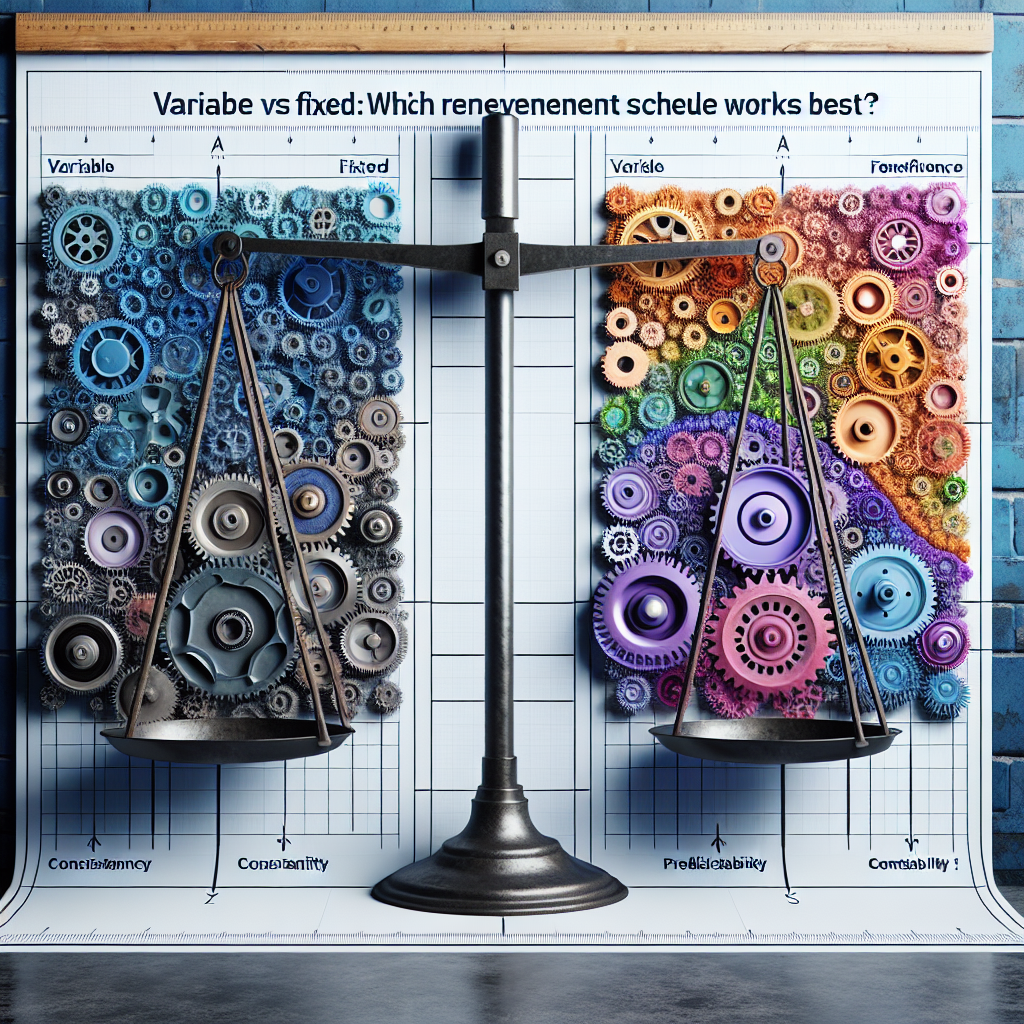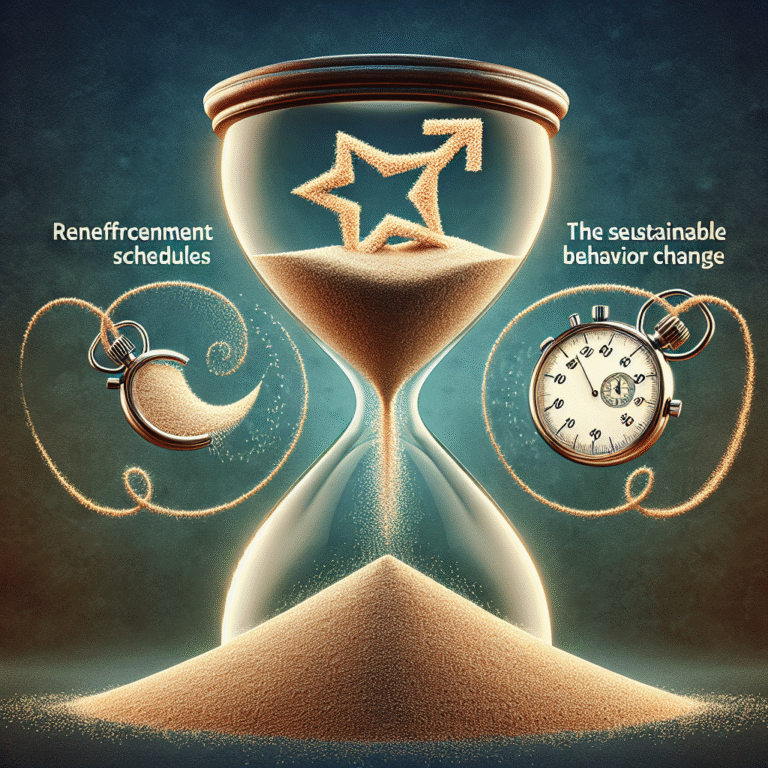
Introduction
Imagine stepping into a casino, the sound of clinking coins and the thrill of the spinning wheel creating an electrifying atmosphere. Why do people flock to places like this? The answer lies in the concept of reinforcement schedules. Understanding the debate of Variable vs. Fixed: Which Reinforcement Schedule Works Best? can empower you to boost motivation in everyday life, from education to workplace productivity, making it a vital topic for anyone interested in optimizing performance.
Reinforcement schedules shape behavior by determining when and how rewards are given. This article dives into the nuances of these schedules and their practical applications, exploring the benefits and drawbacks of each. By the end, you’ll have a clear understanding of how to harness these strategies for maximum impact.
Understanding Reinforcement Schedules
Before diving into the comparison, let’s clarify what reinforcement schedules are.
What are Reinforcement Schedules?
Reinforcement schedules are frameworks used in behavioral psychology that dictate how often and when rewards are given for desired behaviors.
- Fixed Schedules provide a reward after a specific number of responses or after a fixed time.
- Variable Schedules provide rewards based on unpredictability, either in responses or time.
Types of Reinforcement Schedules
Here’s a breakdown:
| Schedule Type | Description | Example |
|---|---|---|
| Fixed Interval | Reward after a set time | Weekly paycheck |
| Fixed Ratio | Reward after a set number | Commission for every five sales |
| Variable Interval | Reward at unpredictable times | Slot machines |
| Variable Ratio | Reward after an unpredictable number | Fishing, where you catch a fish unpredictably |
Understanding these distinctions is key to answering Variable vs. Fixed: Which Reinforcement Schedule Works Best?
Case Studies: Real-World Applications
To fully grasp how these reinforcement schedules play out in various environments, let’s analyze several case studies.
Case Study 1: Classroom Reinforcement
In a study conducted by the University of Southern California, educators implemented both fixed and variable reinforcement schedules to encourage student participation.
Findings:
- Fixed Schedule: Rewards (such as stickers) were given every time a student answered correctly during the first half of the semester. While this increased initial participation, interest waned after rewards stopped.
- Variable Schedule: In the second half, rewards were given randomly after correct answers. This method led to significantly increased and sustained engagement.
Relevance:
This underscores that Variable vs. Fixed: Which Reinforcement Schedule Works Best? can often depend on the context. Variable schedules maintained higher engagement in this educational setting.
Case Study 2: Workplace Productivity
A tech company tested both schedules to boost employee performance.
Findings:
- Fixed Schedule: Employees received bonuses for meeting monthly targets. While effective in the short term, productivity dropped as the incentive became predictable.
- Variable Schedule: The company introduced surprise bonuses at unexpected times. This led to an ongoing spike in performance, motivating employees to exceed targets regularly.
Relevance:
The tech company’s experience illustrates that when it comes to maintaining long-term motivation, Variable vs. Fixed: Which Reinforcement Schedule Works Best? tends toward the variable, keeping employees on their toes and continuously striving for excellence.
The Science Behind Variable vs. Fixed Schedules
Understanding the psychological principles at play can enrich our comprehension of these reinforcement schedules.
The Psychology of Expectancy
Research by B.F. Skinner demonstrated that variable reinforcement could create what’s known as the “partial reinforcement effect.” This phenomenon suggests that behaviors learned under variable reinforcement are often more resistant to extinction than those learned under fixed reinforcement.
Dopamine Release
Studies have shown that variable reinforcement leads to spikes in dopamine release, a neurotransmitter linked to pleasure and motivation. When rewards are unpredictable, we experience a greater sense of excitement and anticipation.
Example Flowchart of Dopamine Response
mermaid
graph LR
A[Variable Schedule Trigger] –> B[Dopamine Release]
B –> C[Increased Motivation]
C –> D[Engagement in Behavior]
D –> E[Variable Schedule Reward]
E –> B
Pros and Cons of Each Schedule
Fixed Reinforcement Schedule
Pros:
- Easy to implement
- Creates predictability
- Useful for initial learning
Cons:
- Can lead to diminished interest over time
- More susceptible to extinction
Variable Reinforcement Schedule
Pros:
- Sustains long-term engagement
- Reduces predictability
- Enhances overall motivation
Cons:
- More complex to implement
- May require more resources to monitor
Summary Table
| Aspect | Fixed Schedule | Variable Schedule |
|---|---|---|
| Predictability | High | Low |
| Motivation Level | Often short-term | Often long-term |
| Implementation | Generally easy | Requires strategy |
Application of Reinforcement Strategies
To maximize the benefits of both schedules, consider the following applications:
In Education
- Use Fixed Schedules for initial skill acquisition, then gradually shift to variable schedules to maintain engagement.
In the Workplace
- Implement variable rewards for team performance, but start with fixed incentives to create an initial drive.
In Personal Habits
- For developing new habits, consider starting with consistent rewards before introducing variability to sustain long-term motivation.
Conclusion
Navigating the intricate landscape of reinforcement schedules unveils critical insights into human behavior and motivation. Understanding Variable vs. Fixed: Which Reinforcement Schedule Works Best? empowers educators, managers, and individuals to create environments that foster ongoing engagement and productivity.
By leveraging the strengths of both schedules, one can motivate behavior in a way that is both effective and sustainable. Whether you’re looking to encourage a classroom of students or inspire a team of employees, this knowledge is invaluable.
FAQs
1. What is the primary difference between fixed and variable reinforcement schedules?
Fixed schedules provide rewards at consistent intervals or after a set number of actions, while variable schedules offer unpredictable rewards at random intervals or actions.
2. Can variable schedules lead to higher burnout?
Variable schedules can maintain interest over time, but they may require more resource management to avoid potential burnout. Planning is crucial.
3. In what scenarios are fixed schedules more effective?
Fixed schedules are effective in scenarios where consistent reinforcement is required for mastering a new skill or habit.
4. How can I implement a reinforcement schedule in my personal life?
You could start with fixed rewards for new habits, and once established, switch to variable rewards to keep motivation high.
5. What role does dopamine play in reinforcement schedules?
Dopamine levels fluctuate based on reward predictability. Variable schedules often lead to spikes in dopamine, increasing motivation and engagement.
Understanding Variable vs. Fixed: Which Reinforcement Schedule Works Best? is not just an academic exercise; it’s a powerful tool for optimizing engagement and performance in various facets of life. Embrace these insights and transform your approach to motivation!














